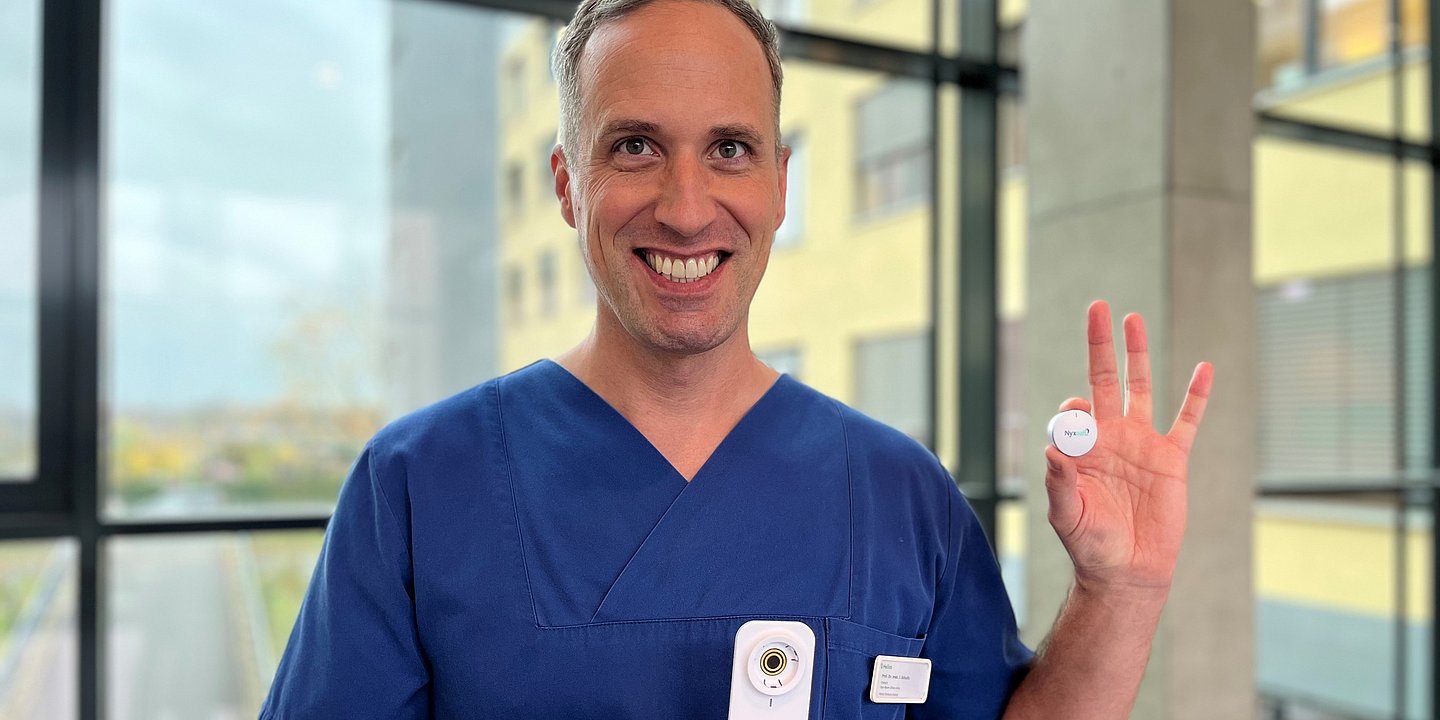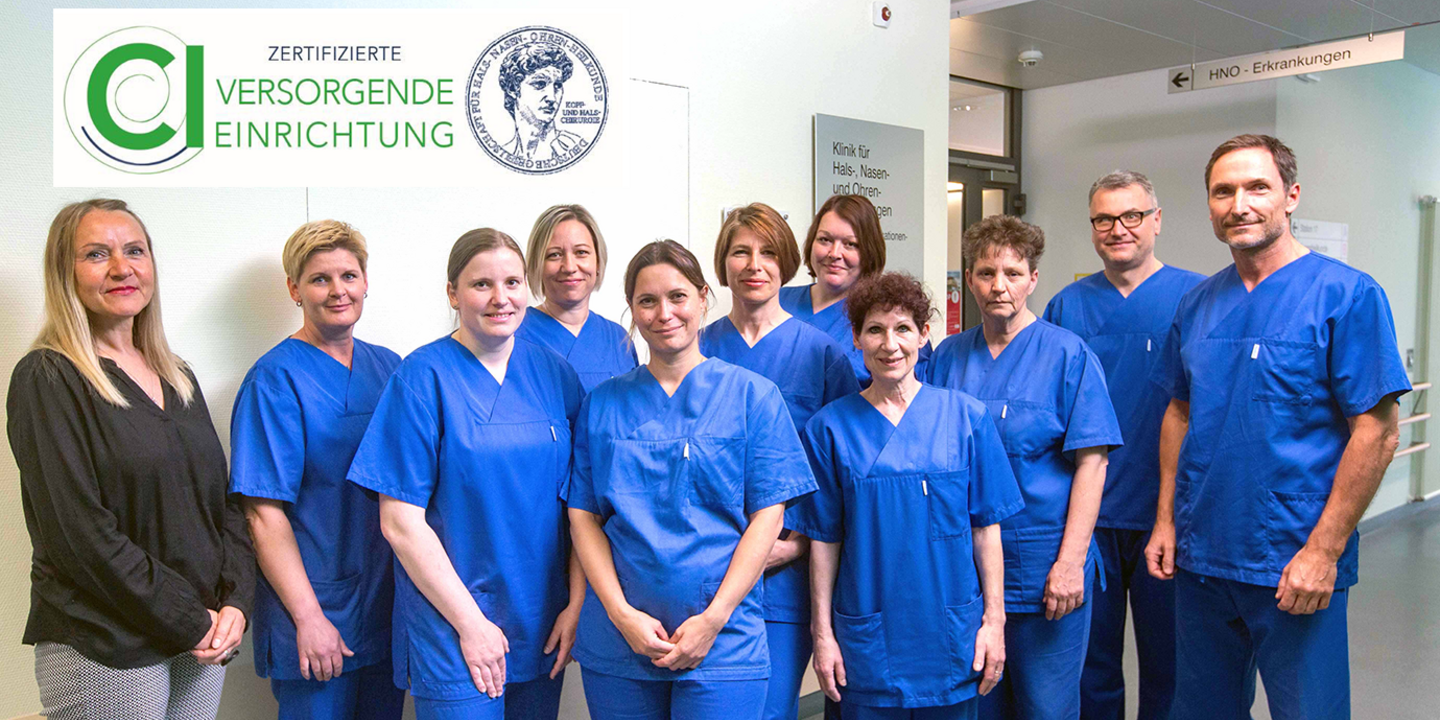
Novel, bilateral tongue pacemaker for the treatment of obstructive sleep apnea
People with obstructive sleep apnoea often feel sleepy and tired during the day and have difficulty concentrating. Innovative tongue pacemaker offers hope for sleep apnea patients and expands the range of ENT therapies in the field of surgical sleep medicine. As an alternative to the CPAP mask, the tongue pacemaker can help to keep the airways open - without the need for mask ventilation.
Our ENT department at the Helios Hospital Krefeld is using a new type of technology to treat obstructive sleep apnoea (OSA) by successfully implanting a wireless tongue pacemaker for the first time. This device represents an innovative treatment option for sufferers who cannot cope with the conventional CPAP mask.
The implant, which is inserted minimally invasively with a discreet incision under the chin, activates the nerves under the tongue during sleep, keeping the airways open. The electrodes of the implant are located on the two branches of the hypoglossal nerve and activate it during sleep. Energy is supplied via a small round activation clip, which is simply and inconspicuously placed under the chin at night so that the patient can sleep completely freely and undisturbed.
The new technology eliminates the need to implant a battery under the skin below the collarbone, meaning that future interventions to change the battery are no longer necessary. The device is also MRI-compatible.
The treatment offers a comfortable and effective alternative to previous treatment methods for many patients with OSA and expands the range of ENT therapies in the field of surgical sleep medicine.
What is obstructive sleep apnea?
We speak of obstructive sleep apnoea (OSA) when the throat muscles relax during sleep and block the upper airway (known as airway obstruction), so that air can no longer flow into the lungs. The reduced ventilation of the lungs leads to a lower concentration of oxygen in the blood, which in turn results in an arousal reaction with renewed tensing of the muscles and reopening of the airway.
This cycle is repeated several times a night. The stressful situation and the associated wake-up reactions lead to fragmented sleep, which results in a considerable impairment of quality of life due to increased daytime tiredness and even daytime sleepiness. Serious secondary diseases can also be caused by untreated sleep apnoea. These include cardiovascular diseases such as heart attacks and heart failure.
The standard treatment is nocturnal ventilation therapy, in which a CPAP mask keeps the airways open with light air pressure. For patients who cannot manage this therapy even after repeated attempts at optimization, we offer the implantation of a tongue pacemaker as a second-line therapy.
What is a tongue pacemaker and how does it work?
The activity of the chin-tongue muscle (genioglossus muscle) is crucial for keeping the upper airways open during sleep. By activating this muscle via the lingual nerve (hypoglossal nerve stimulation), the muscle remains in contraction in a breath-synchronized manner and nocturnal breathing interruptions and snoring are significantly reduced - for healthy sleep and more energy during the day.
Tongue pacemaker: diagnosis, surgery and aftercare
We offer treatment in close cooperation with the Center for Sleep Medicine and external referring physicians. With the help of endoscopic examinations during sleep (sleep video endoscopy), we can check whether you would benefit from a tongue pacemaker. Based on the diagnostics, we discuss the individual treatment options with you in detail.
The tongue pacemaker is inserted by the ENT clinic as part of a minimally invasive procedure. Only three small incisions are required on the neck and chest. After the healing period (around four weeks), we activate the system and gradually make the optimum settings in the sleep laboratory based on your individual needs. At home, you can switch on the system easily and conveniently by remote control before going to bed.
As with any surgical procedure, the benefits and risks of the treatment must be discussed and weighed up in detail. Possible risks can include pain, nausea, temporary tongue discomfort or infections.
Two different systems
We work with two different systems for tongue pacemakers in our clinic. In addition to the already well-established system from Inspire, our clinic is one of the few clinics in Germany to offer another, newly developed pacemaker system from Nyxoah.
Who is tension pacemaker therapy suitable for?
- Moderate to severe obstructive sleep apnea
- Apnea-hypopnea index (AHI) 15/h < 65/h
- CPAP intolerance
- Not very overweight
- No significant concomitant diseases
- Sleep diagnostics not older than 6-12 months
Read more:
-
More about Helios Hospital Krefeld
-
Prof. Dr. med. Johannes David Schultz
Do you need more information about Helios Hospitals or do you want to schedule your treatment?
Please contact our Helios International Office. We will gladly advise you!







